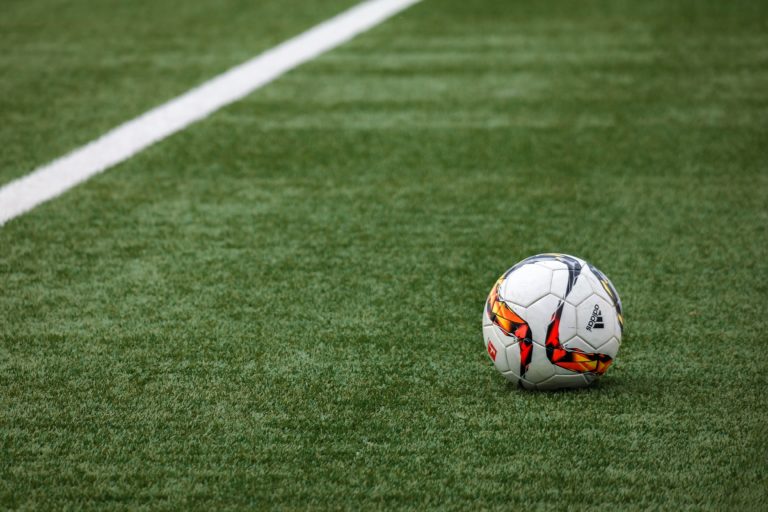
Soccer is a sport built on endurance, stamina and cardio. At the end of the day, any soccer game, from U-9 all the way through the Olympic level, can be influenced or even won through fitness. Normally, club soccer coaches, high school soccer coaches and even academy coaches have their teams train together, running and lifting in large, cohesive groups designed to build unity and camaraderie. However, COVID-19 has changed that. Coaches are getting creative with the ways they are keeping their players engaged and improving during this time, but frankly a lot of the work will need to be done by players. While not all teams can train in person, we’ve compiled some drills that can be accomplished with only a few players, ensuring groups can stay small, and teams can still improve their fitness.
1. Suicides
Suicides are one of the oldest forms of cardio training. A full field soccer suicide involves starting on the touchline. A player sprints, touches the 18 with their hand, and runs back to the touchline. The next run is to the midfield marker and back, then the opposite 18 and back, and then finally a full field sprint. When running suicides, it’s important to remember that the objective is to tire yourself out, not conserve energy for a full field sprint. In soccer, the size and intensity of any individual run can vary greatly depending on context. Change of pace, full field runs, and the ability to transition between offense and defense quickly are critical. Suicides are quite literally the embodiment of just about every run a player may need to make during the game. They can also be competitive when a few players are involved and appropriately spaced out.
2. Back-to-Front Laps
Indian laps require a group of at least three players, but they can be done six feet apart. Indian Laps involve a group of players jogging in line around the perimeter of the soccer field. After a certain amount of time or distance, the player at the back of the line sprints to the front of the line while the rest of the players remain jogging. Once the player reaches the front of the line, he/she slows to match the pace of the group. Indian laps are a great way to build stamina, and mimic the mix of slow, sustained runs and sprints that soccer requires.
3. Tic-Tac-Toe Sprints
Tic-Tac-Toe sprints require pinnies and some cones. Typically, Tic-Tac-Toe sprints are done in larger teams, but any number of players can do these. This drill involves setting up a makeshift Tic-Tac-Toe board with cones, temporary spray chalk, or any other divider available. This area is composed of 9 blank squares of space. One player from each side sprints, carrying their teams pinnie color into the Tic-Tac-Toe box. Players race to drop their pinnie in a square, and then race back to tag starting point. This counts as one turn. Players can use a turn to either drop a pinnie in a square, or remove an opponent’s pinnie. Tic-Tac-Toe sprints involve strategy and endurance, and force a player to think about strategy while simultaneously tiring themselves out.
4. Long Distance Variants
To begin this drill, use cones to establish a box that is approximately 15 yards large. A team of 2-3 players stays within the box at all times. A player then serves the ball into this box in the air, while a defender sprints into the box. The team within the area must settle the ball, and then possess it within the space while the defender must either gain possession or kick the ball out of the 10 yard box. Typically, if the defender can’t gain possession, another defender is added every 30 seconds. However, to maintain appropriate numbers of players according to CDC guidelines, instead of adding additional defenders, the box can simply be made smaller. This drill helps build change of direction, quickness, reaction times and endurance for the defender, while simultaneously improving on-the-ball touches and passing for the possessors.
5. Mirrors
Mirrors are drills designed to improve short-distance burst and change of direction. To do a mirror drill, set up two cones about 10 yards apart. Only two players are needed for this drill. Between the two corners lives an imaginary line that neither player can cross. One player has a ball, the other does not. The player with the ball dribbles back and forth between the two cones, stopping and changing directions at random times in an attempt to beat the defender to one of the cones. The defender remains on their toes for the challenge, shuffling quickly and keeping their eyes on the offender’s chest. Both players are moving as quickly as they can in an attempt to replicate the intensity of game speed. The drill is over when after an allotted period of time, the defender crosses the imaginary line and wins possession. This drill is great for discipline, on the ball stamina, agility and change of direction.
Train Like Legends: The Solution for Highschool, Club and Academy Soccer Teams
While these are just some of the many drills that a soccer team can perform, the reality is, some teams may not feel comfortable practicing in large groups. Coaches will need to continue getting creative to ensure athletes are developing. That’s where Train Like Legends comes in. Championed by 3X USWNT Gold Medalist Heather Mitts, Train Like Legends combines world class programming & instructional videos with a supportive community designed to foster positive growth. Train Like Legend’s innovative digital platform enables anyone to train like Heather without schedules or locations getting in the way. With virtual, elite-level training and simple tools to track player development, creating an advantage for your team has never been easier. Reach out to learn more or sign up today to take advantage of our beta pricing.
